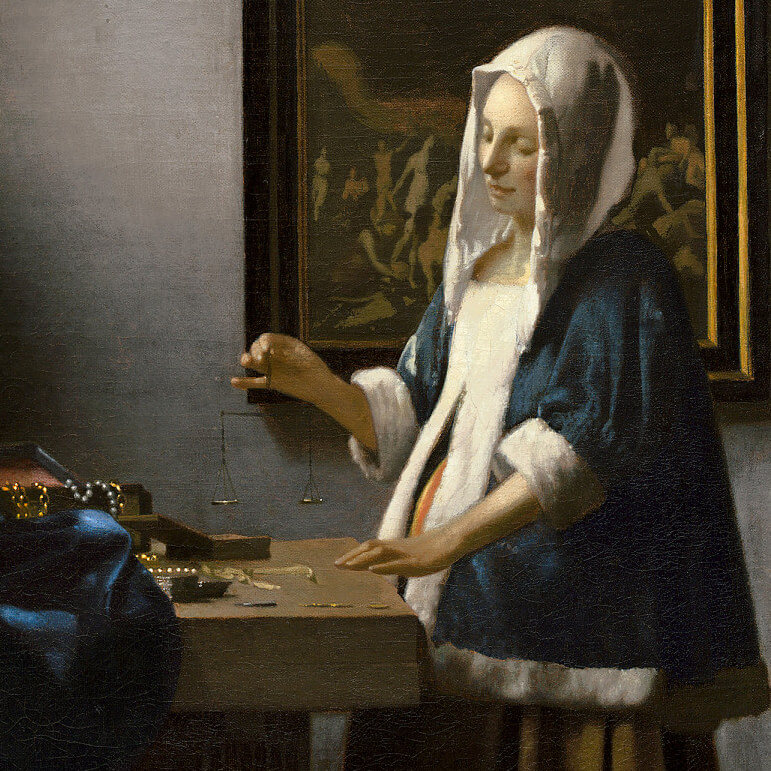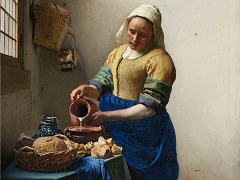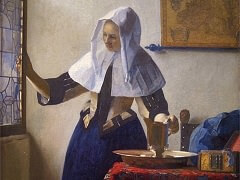Woman Holding a Balance, 1662 by Johannes Vermeer

While generally accepted as an allegory, Woman Holding a Balance has been interpreted in many ways. Early authors assumed that the pans of the woman's balance contained gold or pearls. Consequently, the painting was described until recently as either the Gold-weigher or the Woman Weighing Pearls. Thus the Last Judgment was seen as a warning that the woman should not be distracted by weighing earthly goods and focus on eternal values. In this interpretation the woman is associated with of the iconographic tradition of the goldweigher. In addition, some contemporary authors speculate that the woman is pregnant while others conclude that her costume reflects a style of dress current in the early to mid-1660s. Others interpret the painting theologically, viewing the woman as a secularized image of the Virgin Mary, who, standing before the Last Judgment, assumes the role of intercessor and compassionate mother.

One scholar argues that the image of a pregnant Virgin Mary contemplating balanced scales would have been understood by a Catholic viewer as an anticipation of Christ's life, his sacrifice, and the eventual foundation of the Church. Vermeer expert Arthur K. Wheelock Jr. noted that the scales are in fact empty and thus, she is portrayed in the act of balancing rather than weighing. According to Wheelock, who correlates the mood of profound serenity of the picture with this fact, believes that "the essential message is that one should conduct one's life with temperance and balanced judgment. Indeed this message, with or without its explicit religious context, appears in paintings from all phases of Vermeer's career and must, therefore, represent one of his fundamental beliefs. The balance, an emblem of Justice, and eventually of the final judgment; denotes the woman's responsibility to weigh and balance her own action."




















